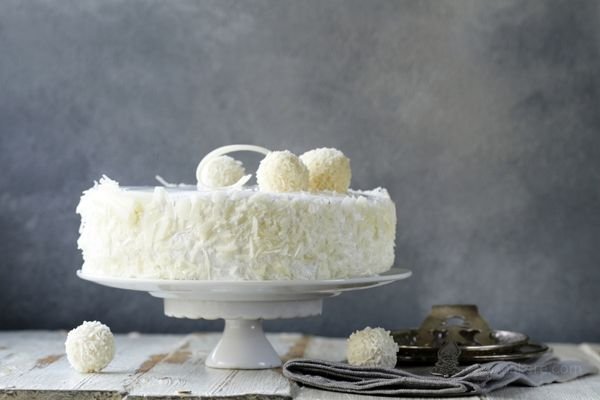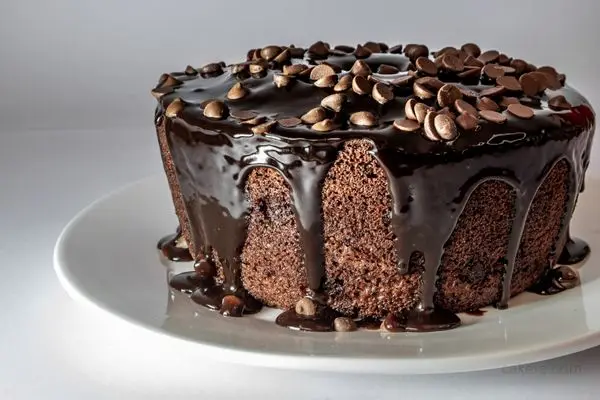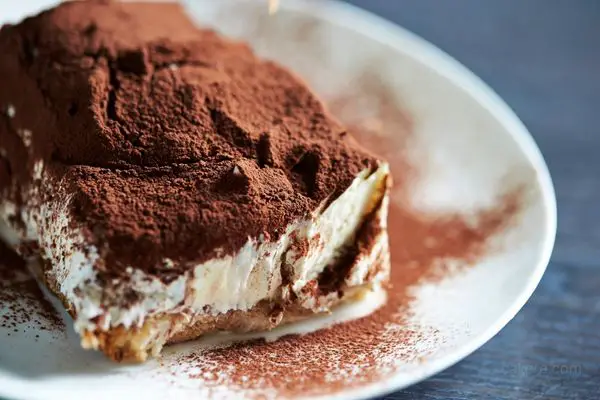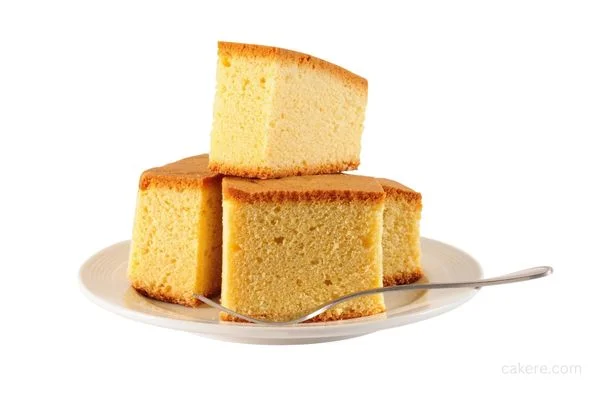Coconut cake is a beloved dessert with a rich history and a delightful taste. This article explores the origins, variations, popularity, nutritional benefits, and baking tips for coconut cake. Join us on a journey through time as we unravel the fascinating story behind this delectable treat.

Origins of Coconut Cake
Coconut cake has a long and storied history that dates back centuries. Let’s delve into the historical background and explore the traditional recipes that have shaped this dessert.
Historical Background
Coconut cake has its roots in tropical regions where coconuts thrive. Native to Southeast Asia, coconuts were highly valued for their versatility and were incorporated into various dishes.
As trade routes expanded, coconuts made their way to different parts of the world, including Europe and the Americas.
In the 19th century, coconut became a popular ingredient in cakes, particularly in the United States and the Caribbean.
The combination of shredded coconut, flour, sugar, and eggs resulted in a moist and flavorful cake that soon gained popularity.
Traditional Recipes
Traditional coconut cake recipes often involved a layer cake filled with coconut cream and frosted with a coconut-flavored buttercream icing.
Some variations incorporated coconut milk or coconut water into the batter, adding to the cake’s richness and enhancing its coconut flavor.
Coconut Cake Variations
Coconut cake has evolved over time, giving rise to a multitude of variations that cater to different tastes and preferences. Let’s explore some of the most popular coconut cake variations.
Classic Coconut Cake
The classic coconut cake remains a timeless favorite. It features tender layers of coconut-flavored cake filled with a luscious coconut cream and covered in a fluffy white buttercream frosting.
The cake is then coated generously with shredded coconut, giving it a beautiful and irresistible appearance.
Tropical Flavors
Embracing the tropical origins of coconuts, some variations infuse additional flavors into the cake.
Pineapple, mango, and passion fruit are often incorporated, adding a tangy and refreshing twist to the traditional coconut cake.
Modern Twists
In recent years, innovative bakers have experimented with coconut cake, creating unique and modern twists.
From coconut-infused cheesecakes to gluten-free coconut flour cakes, the possibilities are endless. These contemporary variations cater to dietary restrictions and offer exciting flavor combinations.
Popularity of Coconut Cake
Coconut cake has gained widespread popularity around the world, becoming a staple dessert for many occasions. Let’s explore the iconic coconut cake destinations and its presence in popular culture.
Iconic Coconut Cake Destinations
Certain places have become renowned for their exceptional coconut cakes. One such destination is the southern region of the United States, where coconut cake holds a special place in the hearts of locals.
Bakeries in states like Georgia and South Carolina have perfected the art of creating moist and delicious coconut cakes that have become iconic regional delicacies.
Coconut Cake in Popular Culture
Coconut cake has also made its mark in popular culture, appearing in literature, films, and television shows. Its presence in celebrations and special occasions depicted in media has further contributed to its popularity and recognition.
The allure of coconut cake as a symbol of indulgence and celebration has transcended generations and continues to captivate dessert enthusiasts worldwide.
Nutritional Benefits of Coconut
Beyond its delectable taste, coconut brings a range of nutritional benefits to the table. Let’s explore the health advantages of coconut and its significance as an ingredient in coconut cakes.
Health Benefits of Coconut
Coconut is rich in healthy fats, vitamins, and minerals. It contains medium-chain triglycerides (MCTs), which are easily digestible and provide a quick source of energy.
MCTs are also believed to offer various health benefits, including improved brain function and weight management.
Coconut is also a good source of fiber, which aids in digestion and promotes satiety. Additionally, it contains antioxidants that help combat oxidative stress and support overall well-being.
Coconut as an Ingredient
Coconut plays a crucial role in enhancing the taste and texture of coconut cakes. Its natural sweetness and subtle nutty flavor infuse the cake with a delightful tropical essence.
Moreover, coconut adds moisture to the cake, resulting in a soft and tender crumb. Whether used in the cake batter, frosting, or as a garnish, coconut elevates the overall experience of indulging in a coconut cake.
Baking Tips for Coconut Cake
To achieve the perfect coconut cake, it’s essential to pay attention to the baking process. Here are some tips to ensure success in your coconut cake endeavors.
Choosing the Right Ingredients
Select high-quality ingredients for the best results. Opt for fresh shredded coconut or coconut flakes to maximize flavor.
Use pure coconut extract to enhance the cake’s coconut essence. Additionally, ensure your other ingredients, such as eggs and butter, are fresh and of good quality.
Mixing and Baking Techniques
Follow the recipe instructions carefully and pay attention to mixing and baking techniques. Properly cream the butter and sugar to achieve a light and fluffy batter. Alternate adding dry and wet ingredients to avoid overmixing.
When baking, monitor the cake closely to prevent over or undercooking, as coconut cakes can be sensitive to slight variations in baking times.
Serving and Presentation
The presentation of a coconut cake adds to its appeal. Consider the following tips for serving and garnishing your coconut cake to create a visually stunning and inviting dessert.
Decoration and Garnishing
Decorate the cake with toasted coconut flakes, creating a beautiful contrast in texture and adding visual interest. Fresh tropical fruits, such as pineapple slices or mango chunks, can be used as garnishes. Edible flowers, like orchids or hibiscus, provide an elegant and exotic touch.
Pairing and Serving Suggestions
Coconut cake pairs well with a variety of accompaniments. Serve it with a dollop of freshly whipped cream or a scoop of coconut or vanilla ice cream.
For an extra indulgence, drizzle the cake with a light coconut glaze or a rum-infused syrup. Pair the cake with a cup of aromatic coffee or a tropical fruit-infused iced tea for a complete sensory experience.
FAQs
Yes, desiccated coconut can be used as a substitute for fresh coconut. Ensure it is unsweetened and adjust the amount accordingly.
Yes, you can freeze coconut cake. Wrap it tightly in plastic wrap and place it in an airtight container before freezing. Thaw it in the refrigerator overnight before serving.
Yes, there are various vegan coconut cake recipes available that use egg substitutes like flaxseed meal or applesauce. Follow a vegan recipe for best results.
Store leftover coconut cake in an airtight container at room temperature for up to three days. For longer storage, refrigerate it for up to a week.
Coconut flour has different properties than regular flour and absorbs more moisture. It is best to follow a recipe specifically designed for coconut flour to achieve the desired results.
Conclusion
The history of coconut cake is as rich and diverse as the flavors it offers. From its origins in tropical regions to its widespread popularity today, coconut cake has become a beloved dessert enjoyed by people around the globe.
Its timeless appeal, combined with its nutritional benefits and endless variations, makes it a true culinary delight.



